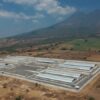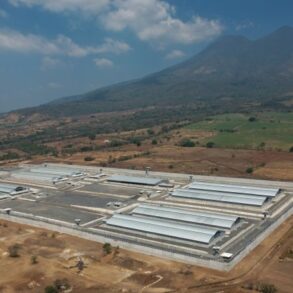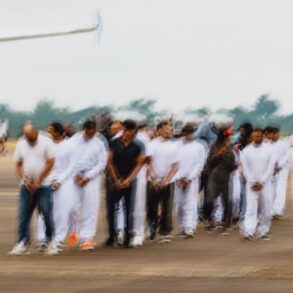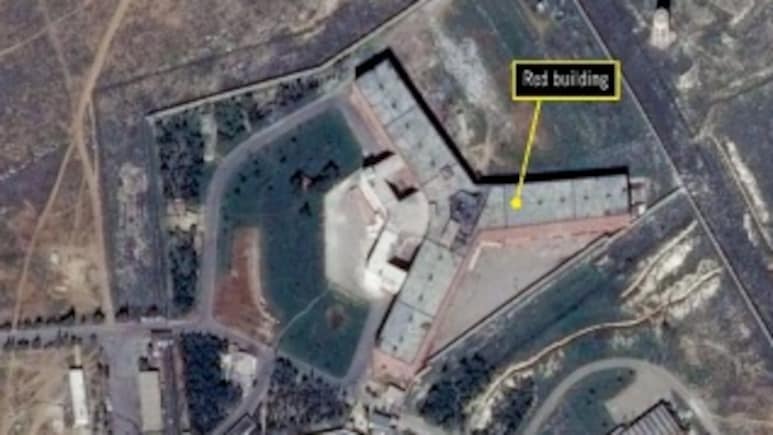
New Delhi:
As a 13-year-old rebellion overthrew the Bashar al-Assad regime in Syria, the rebels released prisoners held up for years in government prisons near Damascus, Hama and Aleppo. Among these prisons, the most notorious is Saydnaya, often referred to as a “human slaughterhouse”.
According to a 2021 report by the UK-based Syrian Observatory for Human Rights, over 1 lakh people have been executed or have died in prisons of the Syrian regime. Out of them, more than 30,000 were killed in Saydnaya alone. An Amnesty International investigation found that “murder, torture, enforced disappearances and extermination carried out at Saydnaya since 2011 have been perpetrated as part of an attack against the civilian population that has been widespread, as well as systematic, and carried out in furtherance of state policy”. The report said violations at Saydnaya “amount to crimes against humanity”.
Mass Hangings
The Amnesty report says Saydnaya military prison had two detention centres. A red building housed civilians arrested since the rebellion began in 2011, and a white building accommodated offices and soldiers held for their involvement in the protests.
The report says thousands of inmates in the red building have been killed in secret executions. Describing the chain of events in these executions, the report says, “Before they are hanged, the victims are condemned to death in ‘trials’ at the Military Field Court located in the al-Qaboun neighbourhood of Damascus, which last between one and three minutes. On the day the prison authorities carry out the hangings, which they refer to as ‘the party’, they collect the victims from their cells in the afternoon. The listed detainees are told that they will be transferred to a civilian prison. Instead, they are brought to a cell in the basement of the red building, where they are severely beaten over the course of two or three hours. In the middle of the night, they are blindfolded and transferred in delivery trucks or minibuses to the white building. There, they are taken into a room in the basement and hanged.
“This takes place once or twice a week, and on each occasion, between 20 and 50 people are hanged to death. Throughout this process, the victims remain blindfolded. They are only told that they have been sentenced to death minutes before the executions are carried out; they are never told when their execution will be carried out; and they do not know how they will die until the nooses are placed around their necks. After the execution is carried out, the victims’ bodies are loaded into a truck, transferred to Tishreen Hospital for registration and buried in mass graves,” the report adds.
Orders Came From The Top
The Amnesty report, prepared after speaking to people who worked within the prison and witness testimonies from those detained, estimated that 5,000 and 13,000 people were extrajudicially executed at Saydnaya between September 2011 and December 2015. “Amnesty International does not have evidence of executions after December 2015. However, detainees are still transferred to Saydnaya, “trials” at the Military Field Court in al-Qaboun have continued, and there is no reason to believe that executions have stopped. Therefore, since December 2015, thousands more people are likely to have been executed,” the report said.
According to the Amnesty report, the execution process at Saydnaya was secret and known only to the officials directly and high-level Syrian officials. “Even the guards who oversee the collection process and beatings at the red building are usually unaware of what happens to the detainees after they are transferred to the white building in the middle of the night,” it said.
Officials at the highest levels of the government authorised these death sentences, the report said. “Death sentences are approved by the Grand Mufti of Syria and by either the Minister of Defence or the Chief of Staff of the Army, who are deputised to act on behalf of President Bashar al-Assad. The sentences are also signed by the head and the Military Prosecutor of the Military Field Court and a representative of the security forces. The hangings are physically overseen by an execution panel, which includes military officers, as well as prison and medical officials,” it said.
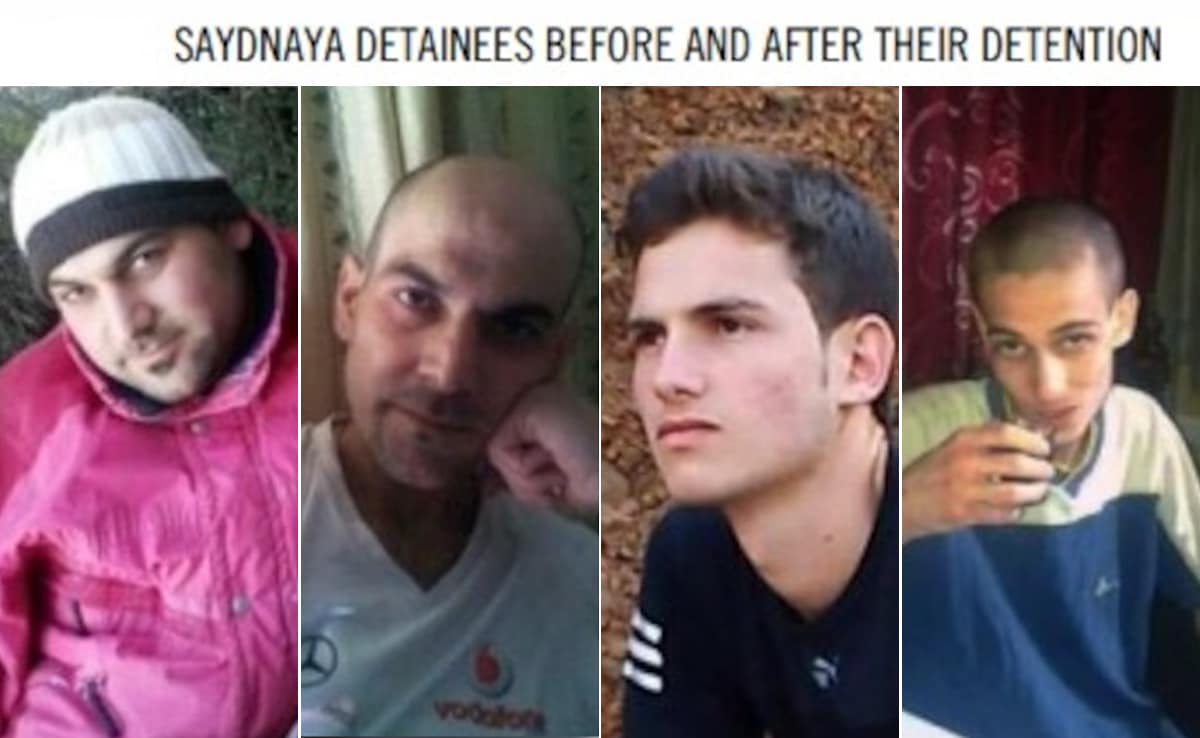
Saydnaya prisoners before and after their detention. Courtesy: Amnesty International
How Prisoners Were Tortured
The Amnesty report said those detained in the red building at Saydnaya are subjected to an established programme of abuse. “They are regularly tortured, usually through severe beatings and sexual violence. They are denied adequate food, water, medicine, medical care and sanitation, which has led to the rampant spread of infection and disease. Silence is enforced, even during torture sessions. Many detainees develop serious mental illnesses such as psychosis.”
The report says that the authorities’ treatment of Saydnaya detainees “seems designed to inflict maximal physical and psychological suffering”. “Their apparent goal is to humiliate, degrade, dehumanize and to destroy any sense of dignity or hope,” it said.
The Amnesty report quoted an inmate, who was a high-school student when he was arrested, “You will struggle to find a former Saydnaya prisoner who will tell you what really happened there, because it is so humiliating.”
“The guard would ask everyone to take off all their clothes and go to the bathroom one by one. As we walked to the bathroom, they would select one of the boys, someone petite or young or fair. They would ask him to stand with his face to the door and close his eyes. They would then ask a bigger prisoner to rape him… No one will admit this happened to them, but it happened so often… Sometimes, psychological pain is worse than physical pain, and the people who were forced to do this were never the same again,” Omar said, describing his nightmare.
Another detainee told Amnesty, “It was as if you had a nail, and you were trying again and again to beat it into a rock. It was impossible, but they just kept going. I was wishing they would just cut off my legs instead of beating them any more.”
Freedom After Decades
Amid the regime change in Syria, rebel fighters have taken control of prisons, including Saydnaya and freed the detainees. A video that has gone viral shows a man reportedly freed from Saydnaya. He appears baffled and struggles to speak as rebels ask him about his family. NDTV cannot verify the authenticity of this video.
One of the detainees freed from Assad’s human slaughterhouse in Sednaya has lost his memory and is unable to speak, shattered by the horrors he endured, Rebels try to ask him about any details to take him back to his family but he’s unable to speak.#Syria #Sednaya pic.twitter.com/PgDVWJFl7w
— Hussam Hammoud | حسام (@HussamHamoud) December 8, 2024
The Guardian has reported about a man’s reunion with his older brother who was detained in a Syrian prison for 39 years. Ali Hassan al-Ali, then a university student, was arrested in 1986. His brother Moammar Ali spent three decades visiting different security branches, where he would get conflicting information about his brother. “There was no place in Syria we didn’t visit. We went around the whole country asking what happened to him. One day they would admit they had him in prison, the next day they would deny it,” said Ali.
Ali Hassan al-Ali entered prison when he was 18. He is now 57. “He has come out of prison as an old man. When he comes home, we will have a big celebration. But until I smell him, until I can say, ‘Here he is, my brother,’ nothing counts,” Ali said.
Fadel Abdulghany, founder of Syrian Network for Human Rights, said that while the release of political prisoners should be celebrated, indiscriminate release of prisoners could carry significant risk.
This post was originally published on this site be sure to check out more of their content.


